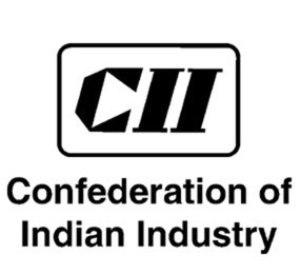CII suggests 5-point action plan for addressing NPAs in banking system
 New Delhi, May 5 - In order to address the mounting Non-Performing Assets (NPAs) pressure on the health of the Indian banking system, CII has recommended a 5 point action plan to the Ministry of Finance and the Reserve Bank of India to deal with steep deterioration in asset quality and effect a turn around strategy for banks by releasing stress from their balance sheets.
New Delhi, May 5 - In order to address the mounting Non-Performing Assets (NPAs) pressure on the health of the Indian banking system, CII has recommended a 5 point action plan to the Ministry of Finance and the Reserve Bank of India to deal with steep deterioration in asset quality and effect a turn around strategy for banks by releasing stress from their balance sheets.
The 5 point action plan focuses upon (1) Revamping the Corporate Debt Restructuring (CDR) mechanism, (2) Creating a special resolution mechanism for the infrastructure sector, (3) Setting up of a National Asset Management Company, (4) Liberalizing norms to Increase capitalization of Asset Reconstruction Companies, and (5) Improving the effectiveness of the insolvency regime and implementation of legal framework.
The steep economic downturn, with GDP growth declining from close to 9 per cent to below 5 per cent over the last couple of years, accompanied by high interest rates has led to a sharp deterioration in asset quality for the banking sector.
"Owing to their impaired portfolios, the banks are hesitant to extend credit and this affects growth in the corporate sector. CII's suggestions are keeping this reality in mind", said Chandrajit Banerjee, Director General, CII.
"Today, amidst decelerating economic growth, an increasing number of borrowers are struggling to repay loans as persistently high inflation and interest rates impact demand and reduce their pricing power. High leverage in corporate sector and a large interest burden could keep stress levels in bank asset portfolios elevated. Further, the unexpected depreciation of the Indian rupee during the last year amplified the problem for companies with significant foreign currency borrowings. The fact that there have been considerably delays in many projects, which have been financed by banks have added to the problem" Banerjee added.
In its release issued here today, CII has said that the rapid upsurge in Non-Performing Assets (NPAs) and restructured loan accounts remains one of the biggest challenges for the Indian banking system. Stressed loans in India, those categorised as bad and restructured, crossed 10 per cent of all loans in mid FY 2013-14 are expected touch 15 per cent mark by the end of FY 2014-15.
CII in its submission to the Ministry of Finance and the Reserve Bank of India delineated a five pronged strategy for addressing the rapid increase in stress level in the Indian banking sector.
Firstly, there is a need to revamp the corporate debt restructuring (CDR) mechanism by addressing the deficiencies in the present system through realignment of the legal system to make remedies available for the creditor as well as phasing out of curbs on asset classification and provisioning, enhancing project appraisal standards, increasing accountability of the promoters during the restructuring process, time-bound assessment and approval of restructuring proposal.
Second, a special resolution mechanism should be created for banks to deal with stress in infrastructure sector through setting up a special purpose infrastructure fund and/or development financial institution (DFI), which would lend to projects that require last-mile funding and are classified as stressed assets.
Third, the Government and the RBI should facilitate the formation of a National Asset Management Company (NAMCO) with banks as its major and initial shareholders with an equity base of around Rs 5-6 thousand crore. The main activities of the NAMCO could include NPA acquisition, aggregation and resolution, including the sale of businesses, or assets, or management change. Further, NAMCO could also focus on rehabilitation, recapitalisation and refinancing.
Fourth, there is a need to address the issue of shortage of capital for the Asset Reconstruction Companies (ARCs). Given the large scale sale of bad loans, last year, the Government allowed foreign investors to buy up to 100 per cent equity in ARCs; but RBI rules stipulate that a single entity cannot hold more than 49 per cent stake. CII has recommended that the RBI make it easier for ARCs to raise capital in its final guidelines on ARCs by relaxing restrictions on the equity that a single entity can hold in them and allow banks to loan money to them against future receivables.
Finally, there is a scope to improve the effectiveness of the insolvency regime and asset resolution mechanism. This can be achieved through better coordination between the different forums that deal with insolvencies to complete restructuring or closure of a business in a defined timeframe. Steps could also be taken to gauge the effectiveness of the different statutes so that corrective measures could be taken such as allowing ARCs the right of first refusal if they have acquired a threshold percentage of debt, to ease the process of debt aggregation to enhance the effectiveness of the Securitization and Reconstruction of Financial Assets and Enforcement of Securities (SARFAESI) Act.
Also, recovery times in Debt Recovery Tribunal (DRT) could be further reduced by streamlining procedures at every stage so that delays could be minimized and remedial measures taken. If the delays point to the caseload for DRTs being too large, then there would be a compelling argument to create more DRTs to improve the time taken to issue recovery certificates.
CII believe if the measures outlined above are implemented effectively, the combined impact would release significant stress from the Indian banking system and would yield positive result in making the banking sector in India more robust. (ANI)